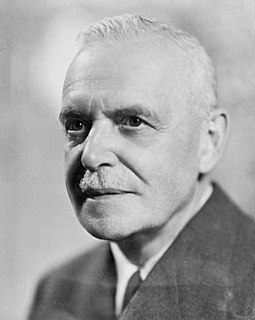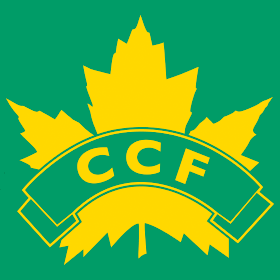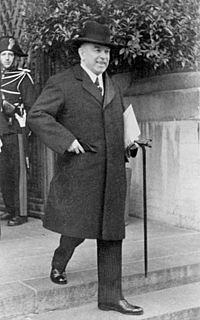| |||||||||||||||||||||||||||||||||||||||||||||||||||||||||||||||||||||||
262 seats in the 21st Canadian Parliament 132 seats needed for a majority | |||||||||||||||||||||||||||||||||||||||||||||||||||||||||||||||||||||||
|---|---|---|---|---|---|---|---|---|---|---|---|---|---|---|---|---|---|---|---|---|---|---|---|---|---|---|---|---|---|---|---|---|---|---|---|---|---|---|---|---|---|---|---|---|---|---|---|---|---|---|---|---|---|---|---|---|---|---|---|---|---|---|---|---|---|---|---|---|---|---|---|
| |||||||||||||||||||||||||||||||||||||||||||||||||||||||||||||||||||||||
 | |||||||||||||||||||||||||||||||||||||||||||||||||||||||||||||||||||||||
| |||||||||||||||||||||||||||||||||||||||||||||||||||||||||||||||||||||||
The Canadian federal election of 1949 was held on June 27 to elect members of the House of Commons of Canada of the 21st Parliament of Canada. It was the first election in Canada in almost thirty years in which the Liberal Party of Canada was not led by William Lyon Mackenzie King. King had retired in 1948, and was replaced as Liberal leader and Prime Minister by Louis St. Laurent. It was also the first federal election with Newfoundland voting, having joined Canada in March of that year, and the first election since 1904 in which the parts of the Northwest Territories were granted representation. The Liberal Party was re-elected with its fourth consecutive government, winning just under 50% of the vote. This victory was the largest majority in Canadian history to that point and remains, by any measure, the largest-ever majority won by the Liberal Party. As of 2017, it remains the third largest majority government in Canadian history.

The House of Commons of Canada is a component of the Parliament of Canada, along with the Sovereign and the Senate. The House of Commons currently meets in a temporary Commons chamber in the West Block of the parliament buildings on Parliament Hill in Ottawa, while the Centre Block, which houses the traditional Commons chamber, undergoes a ten-year renovation.

The 21st Canadian Parliament was in session from September 15, 1949, until June 13, 1953. The membership was set by the 1949 federal election on June 27, 1949, and it changed only somewhat due to resignations and by-elections until it was dissolved prior to the 1953 election.

Canada is a country in the northern part of North America. Its ten provinces and three territories extend from the Atlantic to the Pacific and northward into the Arctic Ocean, covering 9.98 million square kilometres, making it the world's second-largest country by total area. Canada's southern border with the United States is the world's longest bi-national land border. Its capital is Ottawa, and its three largest metropolitan areas are Toronto, Montreal, and Vancouver. As a whole, Canada is sparsely populated, the majority of its land area being dominated by forest and tundra. Consequently, its population is highly urbanized, with over 80 percent of its inhabitants concentrated in large and medium-sized cities, many near the southern border. Canada's climate varies widely across its vast area, ranging from arctic weather in the north, to hot summers in the southern regions, with four distinct seasons.
Contents
The Progressive Conservative Party, led by former Premier of Ontario George Drew, gained little ground in this election.

The Progressive Conservative Party of Canada (PC) was a federal political party in Canada.

The Premier of Ontario is the first minister of the Crown for the Canadian province of Ontario and the province’s head of government. The position was formerly styled "Prime Minister of Ontario" until the ministry of Bill Davis formally changed the title to premier.

George Alexander Drew, was a Canadian conservative politician who founded a Progressive Conservative dynasty in Ontario that lasted 42 years. He served as the 14th Premier of Ontario from 1943 to 1948.
Smaller parties, such as the social democratic Co-operative Commonwealth Federation, and Social Credit, a party that advocated monetary reform, lost support to the Liberals, and to a lesser extent, the Conservatives.
Social democracy is a political, social and economic ideology that supports economic and social interventions to promote social justice within the framework of a liberal democratic polity and a capitalist economy. The protocols and norms used to accomplish this involve a commitment to representative and participatory democracy, measures for income redistribution and regulation of the economy in the general interest and welfare state provisions. Social democracy thus aims to create the conditions for capitalism to lead to greater democratic, egalitarian and solidaristic outcomes. Due to longstanding governance by social democratic parties and their influence on socioeconomic policy development in the Nordic countries, in policy circles social democracy has become associated with the Nordic model in the latter part of the 20th century.

The Co-operative Commonwealth Federation (CCF) was a social-democratic and democratic socialist political party in Canada. The CCF was founded in 1932 in Calgary, Alberta, by a number of socialist, agrarian, co-operative, and labour groups, and the League for Social Reconstruction. In 1944, the CCF formed the first social-democratic government in North America when it was elected to form the provincial government in Saskatchewan. In 1961, the CCF was succeeded by the New Democratic Party (NDP). The full, but little used, name of the party was Co-operative Commonwealth Federation (Farmer-Labour-Socialist).

The Social Credit Party of Canada, colloquially known as the Socreds, was a conservative-populist political party in Canada that promoted social credit theories of monetary reform. It was the federal wing of the Canadian social credit movement.
Voter turn-out: 73.8%


















